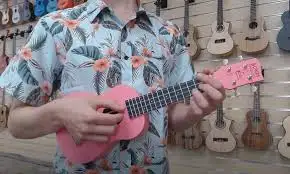monopod

In the world of photography, capturing the perfect moment is essential, and monopods have become indispensable tools for photographers of all skill levels. Monopods provide stability and support while remaining lightweight and portable, making them ideal for various photography environments. With their ability to reduce camera shake, monopods are perfect for shooting at longer focal lengths or in low-light conditions. Unlike tripods, monopods offer the flexibility to quickly reposition your camera, allowing photographers to adapt to fast-paced shooting situations effortlessly. Many photography enthusiasts find that using a monopod enhances their shooting capabilities, as it can be easily maneuvered in crowded settings or uneven terrain, unlocking new creative possibilities. When selecting the ultimate monopod companion, several key features should be considered: Capture Every Moment with the Ultimate Monopod Companion
The Rise of Monopods in Photography
Key Features of Monopods
Choosing the Right Monopod for Your Needs
Selecting the right monopod is essential for achieving your photography goals. Before making a purchase, consider the following factors:
How to Use a Monopod Effectively
Utilizing a monopod to its fullest potential involves more than just attaching your camera and shooting. Here are some tips for effective use:
Benefits of Using a Monopod
Enhanced Stability
One significant advantage of using a monopod is the enhanced stability it provides. This stability minimizes the chances of camera shake, crucial for achieving sharp images, especially at slower shutter speeds or when using longer lenses. With a monopod, photographers can maintain clarity in their shots while avoiding the bulk and weight of a traditional tripod. When photographing fast-moving subjects, a monopod allows you to quickly adjust your framing without sacrificing stability.
Portability and Convenience
Travel photographers particularly appreciate the portability of monopods. Due to their lightweight and compact design, they can easily fit into bags, allowing for effortless transportation. This convenience means that you are more likely to carry your monopod on shoots, ensuring that you are always prepared for spontaneous photography opportunities. Its quick setup and take-down feature also contribute to the overall convenience, allowing you to transition from one shot to the next seamlessly.
Versatility Across Photography Styles
Another compelling reason to invest in a monopod is their versatility across different photography styles. Whether you are shooting landscapes, wildlife, or sporting events, a monopod can adapt to your needs. In outdoor events like hiking, a monopod can double as a walking stick, providing support while making it easier to capture stunning scenery. The flexibility to switch from horizontal to vertical shooting positions combines the best features of a tripod and a handheld camera setup.
Improved Fatigue Management
Long photography sessions can lead to fatigue, especially when holding a camera for extended periods. Monopods help to reduce muscle strain, allowing you to shoot for more extended periods without discomfort. By redistributing the weight of the camera and lens to the ground through the monopod, you can maintain a more comfortable shooting posture, making it easier to capture every moment without succumbing to fatigue.
Monopod Care and Maintenance
Cleaning Your Monopod
Regular cleaning of your monopod is vital for maintaining its functionality. Dust and debris can accumulate in the joints and locking mechanisms, which may hinder performance. To clean, wipe the monopod down with a microfiber cloth, paying special attention to the leg locks and rubber foot. If mud or moisture gets on the monopod, ensure it dries thoroughly to prevent rust and damage.
Regular Inspections
Conduct regular inspections of your monopod to check for any signs of wear or malfunction. Ensure the leg locks are functioning correctly, and there are no visible cracks or dents. Addressing minor issues before they escalate can prolong the life of your monopod and ensure that it performs optimally during crucial shoots.
Storage Recommendations
Proper storage is essential for preserving your monopod's integrity. Store your monopod in a cool, dry place, away from extreme temperatures and humidity. Consider using a padded case to protect it from scratches and accidental impacts. If possible, disassemble the monopod when not in use to minimize wear on the locking mechanisms.
FAQs
What is the main advantage of using a monopod over a tripod?
The primary advantage of a monopod is its portability and ease of use. It provides sufficient stability while allowing for quick adjustments and repositioning, making it perfect for dynamic shooting environments.
Can monopods be used for video recording?
Yes, monopods are excellent for video recording as they help to stabilize the camera while allowing the videographer to move freely and capture fluid motion shots.
How do I choose the right height for my monopod?
The right height for a monopod depends on your height and shooting style. Ideally, the monopod should reach your waist level when fully extended for optimal comfort and stability.